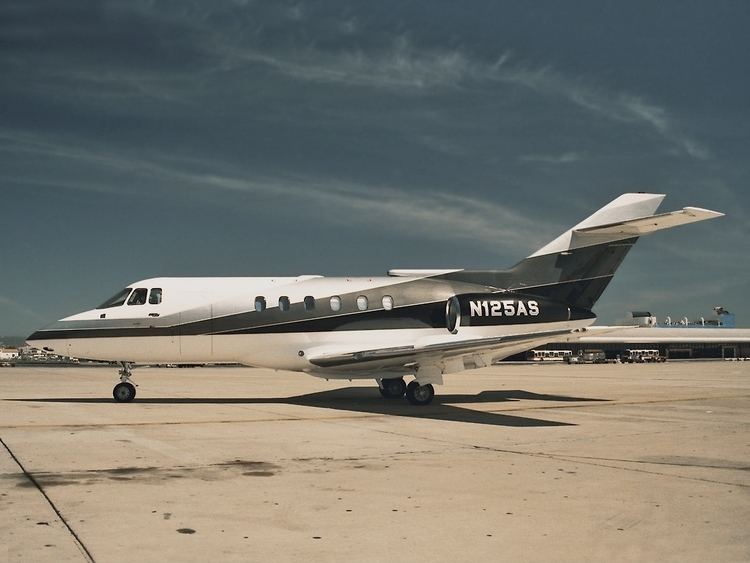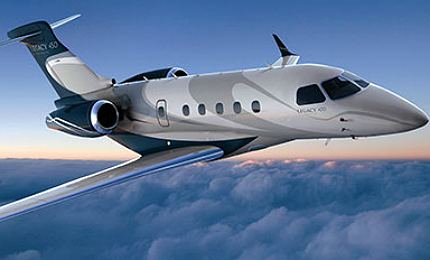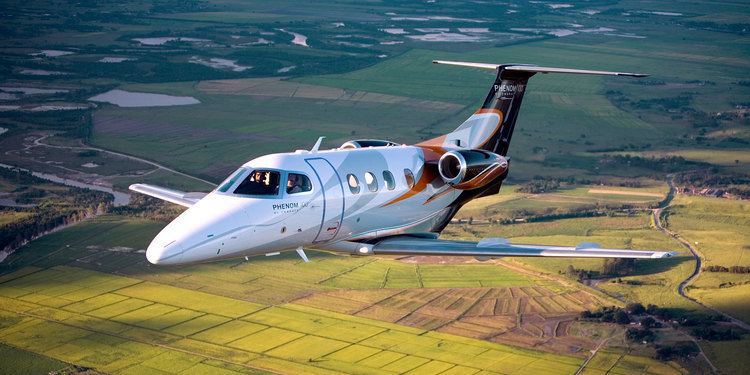 | ||
Textron aviation announces citation longitude and hemisphere business jets aintv
A business jet, private jet, or bizjet, or simply B.J., is a jet aircraft designed for transporting small groups of people. Business jets may be adapted for other roles, such as the evacuation of casualties or express parcel deliveries, and some are used by public bodies, government officials or the armed forces.
Contents
- Textron aviation announces citation longitude and hemisphere business jets aintv
- The global 7000 business jet bombardier s home in the sky aintv
- 1950s first flight
- 1960s first flight
- 1970s first flight
- 1980s first flight
- 1990s first flight
- 2000s first flight
- Configuration
- Fleet
- Operators
- Flight departments
- Charter companies
- Fractional ownership
- Classes
- Very light jets
- Light jets
- Mid size jets
- Super mid size jets
- Large jets
- VIP Airliners
- References

The global 7000 business jet bombardier s home in the sky aintv
1950s first flight
The Lockheed JetStar, seating ten passengers and two crew, first flew on 4 September 1957. 204 aircraft were produced from 1957 to 1978, powered by four 3,300 pounds-force (15 kN) Pratt & Whitney JT12 turbojet engines, then Garrett TFE731 turbofan for a 44,500 pounds (20.2 t) MTOW, then two General Electric CF700 turbofans.

The smaller, 17,760 pounds (8.06 t) MTOW North American Sabreliner first flew on 16 September 1958. Powered by two Pratt & Whitney JT12 turbojet engines then Garrett TFE731, more than 800 were produced from 1959 to 1982.
1960s first flight

The 25,000 pounds (11 t) MTOW British Aerospace 125 first flew on 13 August 1962, powered by two 3,000 pounds-force (13 kN) Armstrong Siddeley Viper turbojets. Its engine were replaced by Garrett TFE731, then Pratt & Whitney Canada PW300 turbofans. Almost 1,700 aircraft were produced between 1962 and 2013 after being marketed as the Hawker 800.

The 23,500 pounds (10.7 t) MTOW IAI Westwind, developed by Aero Commander, first flew on 27 January 1963, powered by two General Electric CJ610 turbojets, then Garrett TFE731. 442 were built from 1965 to 1987 and it was developed in the IAI Astra, re-branded as the Gulfstream G100.
The 29,000 pounds (13 t) MOTW Dassault Falcon 20 first flew on 4 May 1963, powered by two General Electric CF700, then Garrett ATF3 turbofans and Garrett TFE731. From 1963 to 1988, 508 were built and it is the basis of the Dassault Falcon family.
The first light jet first flew on 7 October 1963 : the Learjet 23. Powered by two 2,850 pounds-force (12.7 kN) General Electric CJ610, its 12,500 pounds (5.7 t) MTOW complies with FAR Part 23 regulations. 104 were built between 1962 and 1966 and it is the first member of the Learjet Family.
On 2 October 1966 the first large business jet first flew, the 65,500 pounds (29.7 t) MTOW Grumman Gulfstream II, powered by two 11,400 pounds-force (51 kN) Rolls-Royce Spey turbofans. From 1967 to the late 70s, 258 were built and it led to the ongoing Gulfstream Aerospace long range family.
The 11,850 pounds (5.38 t) MTOW Cessna Citation I first flew on 15 September 1969, powered by two 2,200 pounds-force (9.8 kN) Pratt & Whitney Canada JT15D turbofans. Produced between 1969 and 1985 at 689 samples, it is the first of the Cessna Citation family.
1970s first flight
The trijet Dassault Falcon 50 made its first flight the 7 November 1976. The 40,000 pounds (18 t) MTOW airplane is powered by three 3,700 pounds-force (16 kN) TFE731. With the cross-section of the Falcon 20, it is the basis of the larger Falcon 900.
On 8 November 1978, the prototype Canadair Challenger took off. The 43,000–48,000 pounds (20–22 t) MTOW craft, usually powered by two 9,200 pounds-force (41 kN) General Electric CF34, the basis of the long range Global Express family and of the Bombardier CRJ regional airliners. The 1000th Challenger has entered service in 2015.
On May 30, 1979 took off the clean-sheet 22,000 pounds (10.0 t) MTOW Cessna Citation III powered by two 3,650 pounds-force (16.2 kN) TFE731, basis of the larger Citation X.
The Mitsubishi MU-300 Diamond made its first flight on 29 August 1978. The 16,100 pounds (7.3 t) MTOW jet was powered by two 2,900 pounds-force (13 kN) JT15D. 950 has been produced, it was renamed Beechjet 400 then Hawker 400.
1980s first flight
The 1980s only saw the introduction of derivatives and no major new design.
1990s first flight
The clean-sheet Learjet 45 took off on 7 October 1995. The 21,500 pounds (9.8 t) is powered by two 3,500 pounds-force (16 kN) TFE731. 642 have been made since.
Powered by two 2,300 pounds-force (10 kN) Williams FJ44, the 12,500 pounds (5.7 t) Beechcraft Premier I light jet made its first flight on December 22, 1998. Nearly 300 has been made before the production stopped in 2013.
2000s first flight
In the opposite way of Bombardier, Embraer derived the Legacy 600 from the ERJ regional jet family. Powered by two 8,800 pounds-force (39.2 kN) Rolls-Royce AE 3007, the 50,000 pounds (22.5 t) plane took off first on March 31, 2001.
On 14 August 2001, the Bombardier Challenger 300 made its first flight. The 38,850 pounds (17.62 t) aircraft is powered by two 6,825 pounds-force (30.36 kN) HTF7000. The 500th has been delivered in 2015.
The first very light jet, the 5,950 pounds (2.70 t) MTOW Eclipse 500, took off on August 26, 2002, powered by two 900 pounds-force (4.0 kN) Pratt & Whitney Canada PW600. 260 have been produced till 2008.
It has been followed by the 8,645 pounds (3.921 t) MTOW Cessna Citation Mustang on 23 April 2005, powered by two 1,460 pounds-force (6.5 kN) Pratt & Whitney Canada PW600 and produced at more than 450.
Then the Embraer Phenom 100 made its maiden flight on 26 July 2007. The 10,500 pounds (4.75 t) MTOW airplane is powered by two 1,600 pounds-force (7.2 kN) Pratt & Whitney Canada PW600. With its Phenom 300 development, nearly 600 have been made.
Configuration
Though the early Lockheed Jetstar had four, most production business jets have two jet engines, mostly rear-mounted podded engine. If mounted below their low wing, it wouldn't allow sufficient engine clearance without a too long landing gear. The HondaJet is the exception with its over the wing engine pods.
Dassault Falcon still builds three-engine models derived from the Falcon 50, and the very light jets market has seen the introduction of several single-engine designs such as the Cirrus SF50.
Fleet
On 1 January 2016, there were 21,342 business jets in the worldwide fleet, of which 11.1% were for sale. 5-year old aircraft residual value level is at a 55% of the list price. About 70% of the fleet was in North America at the end of 2011. The European market is the next largest, with growing activity in the Middle East, Asia, and Central America. In 2015 the total airplane billing amounted to US$21.9 billion, and 718 business jets were delivered to customers across the globe : 199 (27.7%) by Bombardier Aerospace, 166 (23.1%) by Cessna, 154 (21.4%) by Gulfstream Aerospace, 120 (16.7%) by Embraer and 55 (7.7%) by Dassault Falcon.
In 2016 Jetcraft forecasts 7,879 unit deliveries in the next decade for $248 billion, a 31.5 $M average. Cessna should lead the numbers with 24.4% of the deliveries ahead of Bombardier with 21.8% while Gulfstream would lead the revenue market share with 30.6% ahead of Bombardier with 28%. Pratt & Whitney Canada should be the first engine supplier with 30% of the $24B revenue, in front of the current leader Rolls-Royce at 25%. Honeywell will hold 45% of the avionics $16B revenue ahead of Rockwell Collins with 37% and Garmin.
In 2016 Honeywell predicts 8,600 aircraft to be delivered during 2016-26 for a total value of $255 Billion. Its breakdown is 57% big (85% in value) - super-midsize to business liner, 21% midsize (10% in value) - light-medium to medium, and 22% small (5% in value).
For the decade starting in 2017, Aviation Week predicts 11,346 deliveries of business aircraft (jets or not) valued at $250.1 billion, with a fleet growing from 31,864 aircraft to 36,702 aircraft (64% in North America): 4,838 more at an average annual growth rate of 1.6%, with 5,835 retirements. For the coming five-year period, Textron Aviation should lead the market with a 22.8% market share, followed by Bombardier with 20.4%, Embraer with 16.6%, Gulfstream with 15%, Dassault with 8.4% then the rest of manufacturers with 16.9%. There should be 22,190 Engine deliveries, led by the Honeywell HTF7000, Williams FJ44, Pratt & Whitney Canada PT6A Medium, Pratt & Whitney Canada PW300 and the Pratt & Whitney Canada PT6A Large. The average utilization should be 365 flight hours per aircraft per year.
A 2010 study by the National Business Aviation Association found that small and midsize companies that use private jets produce a 219% higher earnings growth rate than those that strictly fly commercial.
Operators
There are three basic types of operators who own, manage and operate private jets.
Flight departments
Flight departments are corporate-owned operators who manage the aircraft of a specific company. Ford Motor Company, Chrysler, and Altria are examples of companies that own, maintain and operate their own fleet of private aircraft for their employees. Flight departments handle all aspects of aircraft operation and maintenance. In the United States, flight-department aircraft operate under FAR 91 operating rules.
Charter companies
Charter operators own or manage private jets for multiple clients. Like traditional flight departments, charter companies handle all aspects of aircraft operation and maintenance. However, they are not aligned with just one corporation. They manage aircraft for a private owner or corporation and also handle the sales of available flight time on the aircraft they own or manage. Maintenance services can also be provided which typically include on-site or mobile repair, major and minor routine inspections, troubleshooting assistance away from base, avionics installation and repair, jet engine and battery service, interior modifications and refurbishment, Inspection Authority (IA) qualified inspectors, aircraft planning and budgetary projections, compliance with service bulletins, aircraft storage management, record keeping and management, technical appraisal of private jet purchases, leases and lease terminations, and Part 91 or Part 135 conformity inspections.
In the United States, business aircraft may be operated under either FAR 91 as private operations for the business purposes of the owner, or under FAR 135 as commercial operations for the business purposes of a third party. One common arrangement for operational flexibility purposes is for the aircraft's owner to operate the aircraft under FAR 91 when needed for its own purposes, and to allow a third-party charter-manager to operate it under FAR 135 when the aircraft is needed for the business purposes of third parties (such as for other entities within the corporate group of the aircraft's owner).
Aircraft charter brokers have entered the marketplace through the ease of setting up a website and business online. Aircraft charter operators are legally responsible for the safe operation of aircraft and charter brokers require no economic authority and are largely unregulated. The Department of Transportation requires that air charter brokers disclose to the consumer that they do not operate aircraft and cannot use terms like "our fleet of aircraft", "we operate", "our charter service" and others.
Fractional ownership
Since 1996 the term "fractional jet" has been used in connection with business aircraft owned by a consortium of companies. Under such arrangements, overhead costs such as flight crew, hangarage and maintenance are split among the users.
Fractional ownership, often called "time share", involves an individual or corporation who pays an upfront equity share for the cost of an aircraft. If four parties are involved, a partner would pay one-fourth of the aircraft price (a "quarter share"). That partner is now an equity owner in that aircraft and can sell the equity position if necessary. This also entitles the new owner to a certain number of hours of flight time on that aircraft, or any comparable aircraft in the fleet. Additional fees include monthly management fees and incidentals such as catering and ground transportation. In the United States, fractional-ownership operations may be regulated by either FAA part 91 or part 135.
Classes
Business Jets can be categorized according to their size.
Very light jets
The very light jet (VLJ) is a classification initiated by the release of the Eclipse 500, on December 31, 2006, which was originally available at around US$1.5 million, cheaper than existing business jets and comparable with turboprop airplanes. It accompanied a bubble for air taxi services, exemplified by DayJet which ceased operations on September 2008, Eclipse Aviation failed to sustain its business model and filed for bankruptcy in February 2009.
Cessna simultaneously developed the Citation Mustang, a six-place twinjet (2 crew + 4 passengers), followed by the Embraer Phenom 100 and the Honda Jet. They have a maximum takeoff weight lighter than the FAR Part 23 12,500 pounds limit, and are approved for single-pilot operation. They typically accommodate 5-7 passengers over a 965 nmi average range, with a $3.6M mean price.
Light jets
Light jets have been a staple of the business jet industry since the advent of the Learjet 23 in the early 1960s. They provide access to small airports and the speed to be an effective air travel tool. Aircraft of this class include:
They typically accommodate 6-8 passengers over a 1953 nmi average range, with a $9.1M mean price.
Mid-size jets
These aircraft are suitable for longer-range travel such as transcontinental flights and for travel with larger passenger capacity requirements. Aircraft of this class include:
They typically accommodate 9 passengers over a 2435 nmi average range, with a $15M mean price.
Super mid-size jets
Super mid-size jets feature wide-body cabin space, high-altitude capability, speed, and long range. These jets combine transatlantic capability with the speed and comfort of a wide-body, high-altitude aircraft. Aircraft of this class include:
They typically accommodate 10-11 passengers over a 3282 nmi average range, with a $22.5M mean price:
Large jets
They typically accommodate 13-14 passengers over a 4365 nmi average range, with a $37.8M mean price.
Including long range jets:
They typically accommodate 13-19 passengers over a 6731 nmi average range, with a $63.3M mean price.
VIP Airliners
Business Airliner can be contracted in Bizliner. Airliners converted into business jets are used by sports teams or VIPs with a large entourage or press corps. Such airplanes can face operational restrictions based on runway length or local noise restrictions. They can be the most expensive type of private jet as they provide the greatest space and capabilities.
Aircraft of this class include:
